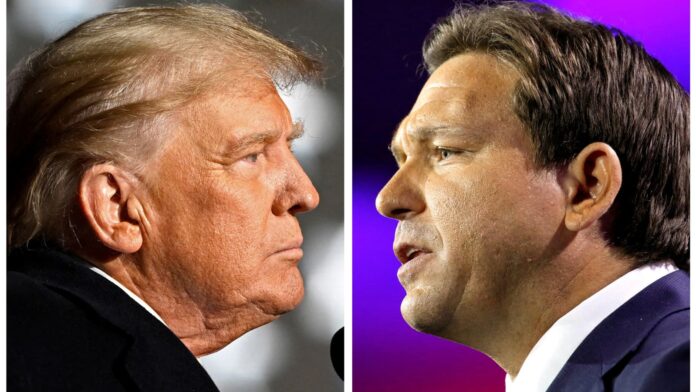Washington Watch
If we’ve learned anything during the leadup to the 2024 Republican primary contests, it’s that the Republican Party no longer exists— either as a body that represents, organizes, and governs its members and candidates, or as a policymaking entity that shapes the ideas around which Republicans coalesce.
The Grand Old Party, as it is called, is not the party of former Presidents Eisenhower, Nixon, Reagan, or George HW or even George W. Bush. Those Republican standard-bearers of the last 70 years would neither recognize nor find a home in today’s party.
It would be easy just to blame Donald Trump for the party’s loss of control over its processes, ideology, and even its “brand.” But while Trump bears some blame for the GOP’s demise, the problems that are distorting American politics are far more serious. Before taking a deeper dive, a look at the role Trump is playing in damaging the GOP is in order.
If nothing else happened during last week’s inaugural Republican primary debate, the way the event unfolded exposed the party’s loss of control. In preparing for that first sanctioned Republican presidential debate, the party laid out its rules for candidates seeking to be included in the proceedings. Prospective participants needed to register at least one percent in a number of national or state polls and have recorded a specified number of donors (40,000) to their campaign from at least 20 different states. These rules, though appearing arbitrary, are normal and necessary— especially in years with a glut of candidates when the party seeks to winnow down the field to include only “serious,” competitive candidates for the debate stage.
There was, however, an additional rule put forward by the party that shed light on just how broken the GOP has become. They stipulated that in order to gain access to the debate, prospective candidates had to sign a pledge that they would endorse whoever won the primary and became the Republican nominee. This was unacceptable to Mr Trump and he refused to join the debate. He argued that, being so far in the lead in all national and state polling, he didn’t see the need to provide his challengers an opportunity to attack him.
This is the same position Mr. Trump took in 2015, though he eventually relented saying “of course I’ll support the nominee”— adding that he would do so only because he was sure that he would be that nominee.
This time, Trump took a different and more defiant tack. He not only boycotted the official GOP-sanctioned debate to be broadcast on Fox TV, but also set up his own counter-programme— an interview with recently fired Fox TV host Tucker Carlson— to air on social media at the same time the official Republican debate was being televised.
The party leaders may not want him, but there’s little they can do to him without alienating a significant portion of their voters. The party can’t control Trump or his voters. And now with so many alternative social media platforms, Trump can have greater reach than the party or its once media ally, Fox News.
While making direct comparisons between social media views and television ratings is difficult, here’s what we know: The Fox GOP debate had 11.8 million viewers— that’s one-half of the audience that watched the first Republican debate during the 2016 primary season. During the time slot allocated for the debate, the Trump-Carlson interview received 73 million views. Although it’s uncertain how many of these “views” were for more than a few seconds, what was clear was that Trump got the best of the party. They were unable to govern candidate behaviour.
Though not on stage and rarely mentioned by name, Trump loomed large over the event. One political observer likened the eight candidates to “the kids’ table at Thanksgiving dinner.” Another compared Trump’s absent presence to Harry Potter’s arch-nemesis, Voldemort— always there and such a threat that his name could not be uttered.
When two brave candidates— both accomplished governors— dared to condemn Trump’s actions on 6 January 2021, they were loudly booed by the audience.
Many Republican Party leaders do not want Trump to be their nominee (they also didn’t want him in 2016). His radical populism violates Conservative principles. His divisive and sometimes violent rhetoric causes concern. And the fact that he very well may spend much of the next year in court facing multiple indictments is worrisome. In addition to all of this, Trump won’t play by the rules set up by the party. And yet there is nothing they can do.
Polls show that Mr Trump continues to hold the support of more than one-half of those who call themselves Republicans. They will not only vote for him, but also still cling to the many fictions he has created over the years: from “birtherism” claiming Obama wasn’t born in the USA and was a Muslim to the contentions that the 2020 election was stolen, Joe Biden isn’t a legitimate president, and January 6 was a peaceful protest. A recent poll of Trump voters shows that 71 percent believe him; that’s more than the number who say they believe their family, other political leaders, and news media.
The party leaders may not want him, but there’s little they can do to him without alienating a significant portion of their voters. The party can’t control Trump or his voters. And now with so many alternative social media platforms, Trump can have greater reach than the party or its once media ally, Fox News.























